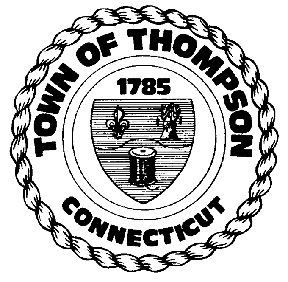The first two decades of 1900s was a flourishing time in the Town of Thompson. The textile mills were in full production and each of the ten villages in Thompson had its own unique sense of community built around its manufacturing center. Now, in the first two decades of the 2000s, Thompson is on the rise again. Some of the mills have crumbled but that is not the case with the spirit of this rural community. A slow but steady revival has been taking place in Thompson towards a more sustainable industrial model. In the past, the mills abused its supportive and natural resources but today development is more metered and respectful.
In 2007 the town revamped its zoning regulations and in 2009 overhauled the Plan of Conservation and Development. In both cases, one goal was to promote the right kind of development, that is sustainable (that is responsible) development and resilient (that is long lasting) development. In 2012 the town initiated its very first corridor study along its main commercial corridor (Route 12) where it addressed existing commercial/residential conflicts. In many cases, this study opened the door to future development.
Now, new commercial development is being proposed for the first time in a long time. Thompson is trying to offer a clear and informative set of regulations supplying both direction and predictability - two qualities appreciated by the development community. With new businesses parks being proposed by private investors, the Town is slowly re-establishing its historical base of industry. As one example, a 140-acre parcel with direct access to the Providence and Worcester rail line is currently being leveled and a spur has been constructed. This type of prime industrial development holds Thompson's future. Located on a major interstate corridor (I-395) and just 50 miles to either Boston, Mass. or Hartford, Conn., Thompson is low hanging fruit.
The town has made efforts to take to lead by building examples of best management practices in its projects. These practices include the treatment of storm water via rain gardens and bio-retention swales and the construction of a LEED certifiable office building to meet the social service needs of the town. Leadership through the town's actions is critical. The private sector wants to see real commitment, not just read about it in the regulatory guidelines. The following is a quote from the recent Plan of Conservation and Development:
"To lose our history would be to lose our identity - with each lost house, mill, tree, meeting place, or brook the town changes. This plan update is intended to direct future development, land use issues and policies to ensure that the unique identity of Thompson does not lose its resources nor become a community deprived of history."
"To lose our landscape would be to lose our opportunity - the lakes, rivers, brooks, farms and wetlands which make up our environment have defined Thompson in the past. Were it not for these rivers the historic mills would have not been built. Were it not for our agricultural heritage, Thompson would be far different than it is today."
"To lose our youth would be to lose our future - it is critical that our housing, policies and opportunities in Thompson do not turn our youth away and do not prohibit others from entering our community. These are the future families that will shape and protect Thompson's future and must not be shut out."
Much has been said about "sustainable" development in times of economic turmoil but a more "resilient" development pattern is what is really required. This means being resilient to the fluctuations of the market or the next natural disaster. Resiliency is what makes this nation great and what will keep Thompson on the rise.
Kevin Kennedy, AICP, LEED green associate, is director of planning & development for the Town of Thompson, North Grosvenordale, Conn.
Tags:










